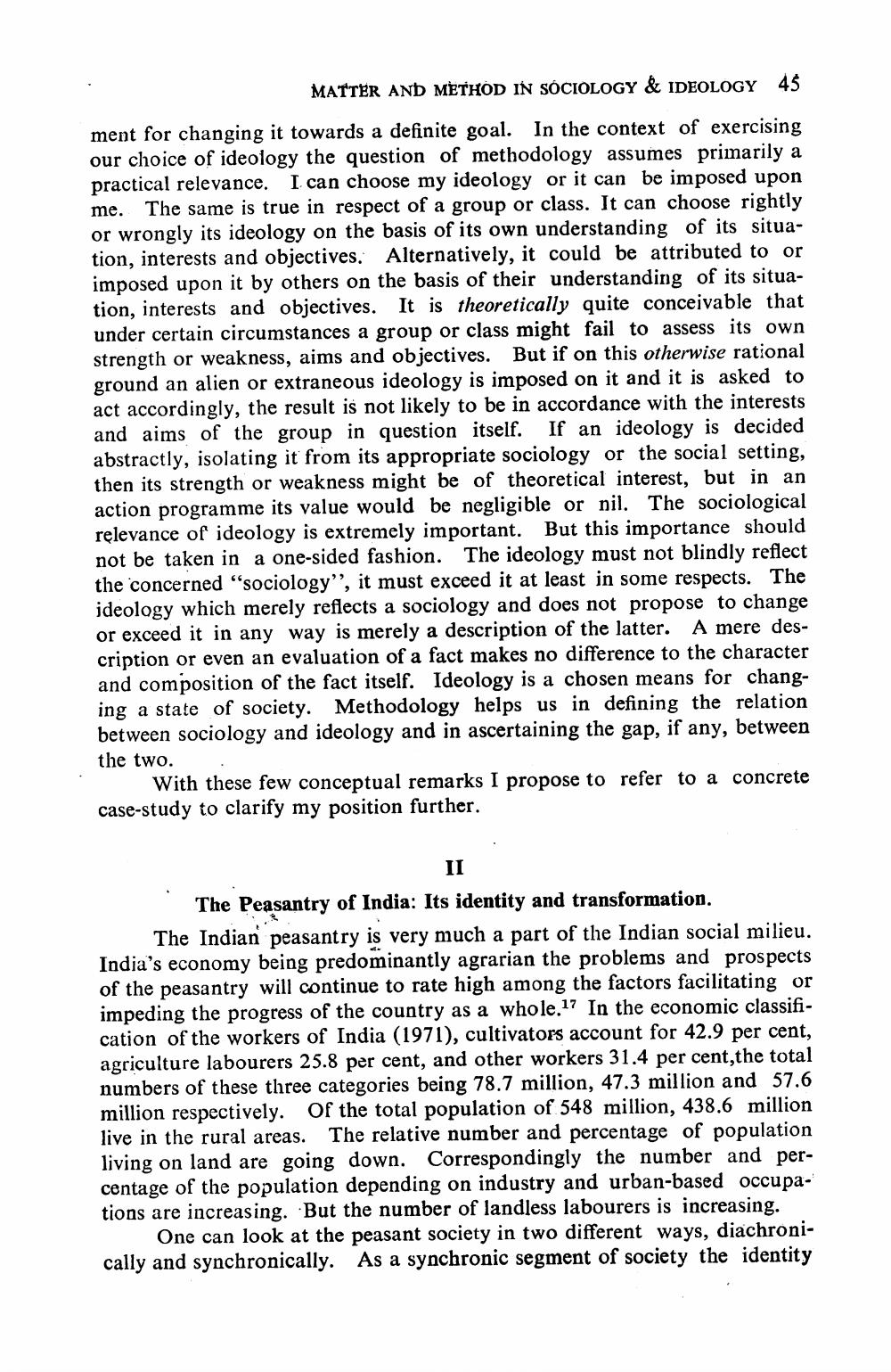Book Title: Matter And Method In Sociology And Ideology Author(s): D P Chattopadhyaya Publisher: D P Chattopadhyaya View full book textPage 7
________________ MATTER AND METHOD IN SOCIOLOGY & IDEOLOGY 45 ment for changing it towards a definite goal. In the context of exercising our choice of ideology the question of methodology assumes primarily a practical relevance. I can choose my ideology or it can be imposed upon me. The same is true in respect of a group or class. It can choose rightly or wrongly its ideology on the basis of its own understanding of its situation, interests and objectives. Alternatively, it could be attributed to or imposed upon it by others on the basis of their understanding of its situation, interests and objectives. It is theoretically quite conceivable that under certain circumstances a group or class might fail to assess its own strength or weakness, aims and objectives. But if on this otherwise rational ground an alien or extraneous ideology is imposed on it and it is asked to act accordingly, the result is not likely to be in accordance with the interests and aims of the group in question itself. If an ideology is decided abstractly, isolating it from its appropriate sociology or the social setting, then its strength or weakness might be of theoretical interest, but in an action programme its value would be negligible or nil. The sociological relevance of ideology is extremely important. But this importance should not be taken in a one-sided fashion. The ideology must not blindly reflect the concerned "sociology", it must exceed it at least in some respects. The ideology which merely reflects a sociology and does not propose to change or exceed it in any way is merely a description of the latter. A mere description or even an evaluation of a fact makes no difference to the character and composition of the fact itself. Ideology is a chosen means for changing a state of society. Methodology helps us in defining the relation between sociology and ideology and in ascertaining the gap, if any, between the two. With these few conceptual remarks I propose to refer to a case-study to clarify my position further. concrete II The Peasantry of India: Its identity and transformation. The Indian peasantry is very much a part of the Indian social milieu. India's economy being predominantly agrarian the problems and prospects of the peasantry will continue to rate high among the factors facilitating or impeding the progress of the country as a whole.17 In the economic classification of the workers of India (1971), cultivators account for 42.9 per cent, agriculture labourers 25.8 per cent, and other workers 31.4 per cent,the total numbers of these three categories being 78.7 million, 47.3 million and 57.6 million respectively. Of the total population of 548 million, 438.6 million live in the rural areas. The relative number and percentage of population living on land are going down. Correspondingly the number and percentage of the population depending on industry and urban-based occupations are increasing. But the number of landless labourers is increasing. One can look at the peasant society in two different ways, diachronically and synchronically. As a synchronic segment of society the identityPage Navigation
1 ... 5 6 7 8 9 10 11 12 13 14 15 16 17
